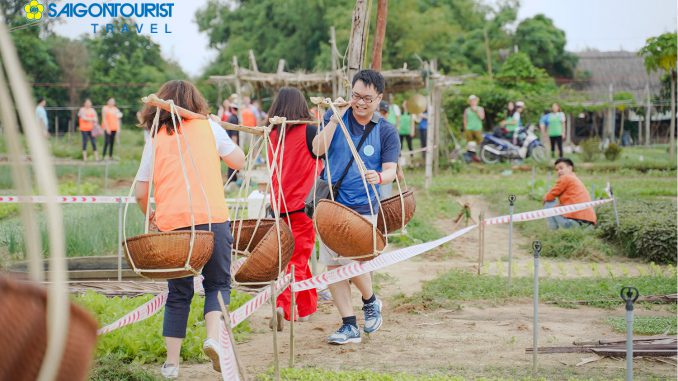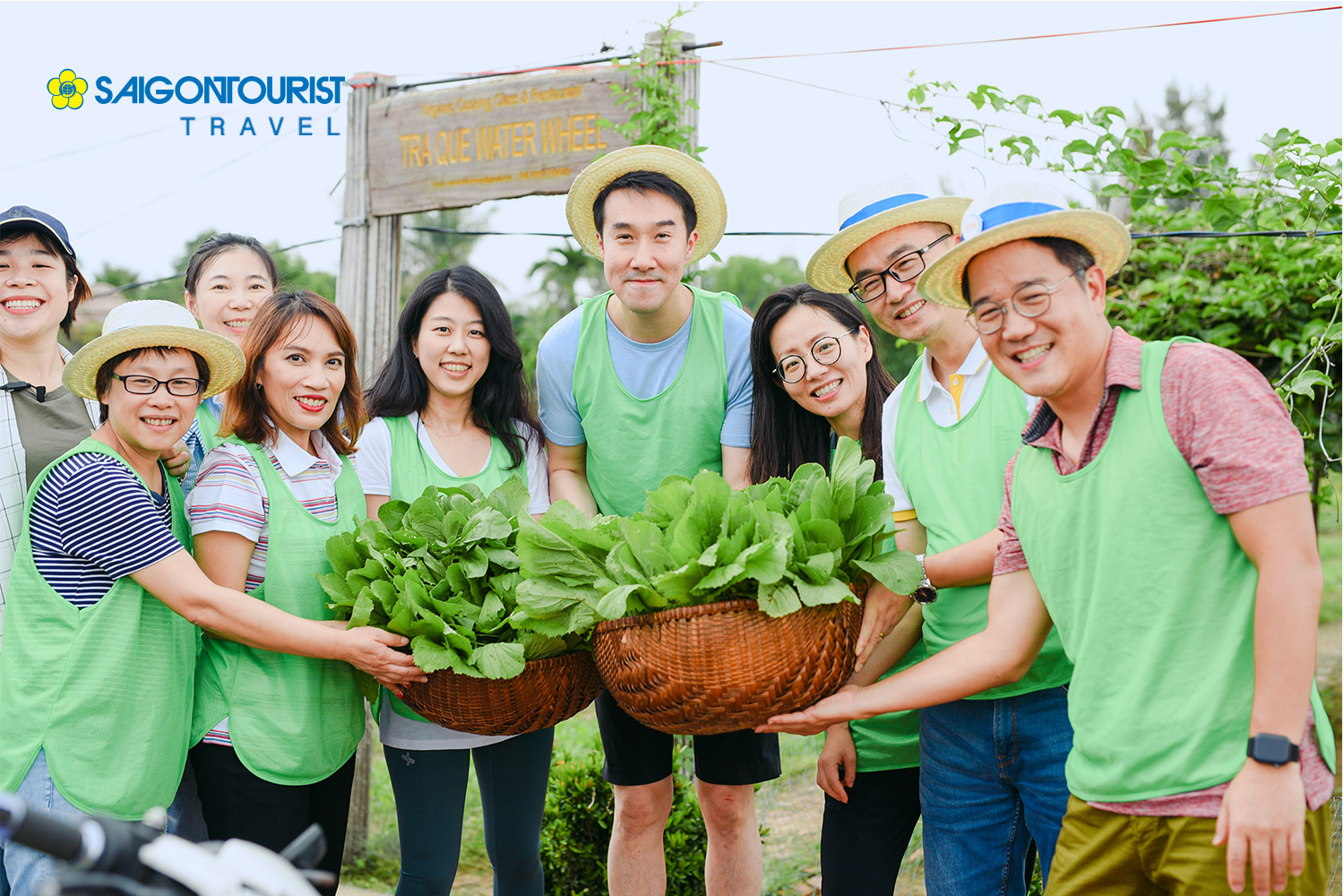
- 09/07/2020
Tra Que is situated 2.5 km north-east of Hoi An ancient city, a UNESCO heritage site. Surrounded in Cam Ha Commune and De Vong River by Tra Que algae bog, the village boasts high biodiversity and a mild climate, suitable for farming.
In addition to practicality, the region has a 400 year history, underlining the pure culture of local farmers generations.
Visitors can enjoy an insightful and engaging sessions on the practice of farming Tra Que, village artifacts and the staple basil seed drink, popular thanks to its cooling properties.
Tra Que Village has gained broad visibility throughout the country in recent years due to Hoi An’s rapid growth, its produce increasingly appearing on dinner tables beyond provincial boundaries.
Travel agencies launched tours and educational programs to the area, keeping up with the trend, some offering tourists the chance to get down and dirty with local farmers.
The aforementioned project is the result of an initiative by the Hoi An government to further grow community-based tourism in collaboration with villagers of Tra Que.

The village was initially called Nhu Que, according to older generations, because local herbs carried a powerful cinnamon fragrance that was best characterized as soft, woody and spicy-hot.
The lush green soil has no fertilizer or chemical contact with fresh produce. Farmers then harvest special algae from the nearby lagoon or Co Co Channel, giving a distinctive taste to the vegetables.
Tra Que ‘s reputation reached the ear of a king of the Nguyen Dynasty on an excursion along the De Vong River in the early 18th century, it is said. The king stopped mid-way for an enriching culinary experience, a vegetable with cinnamon spice and camellia floral fragrance which attracted special attention. The king re-named the village “Tra Que” (Camellia Cinnamon), incorporating those special qualities.
Source : Vnexpress International